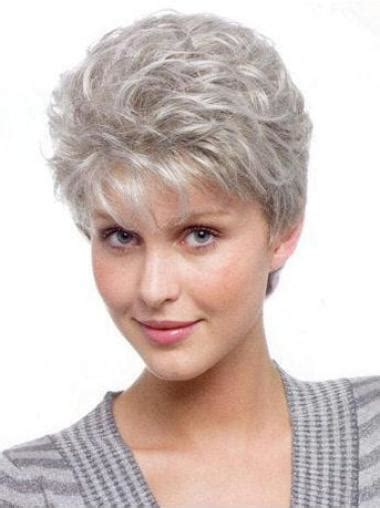Aging brings about inevitable changes in physical appearance, including hair loss or thinning. For elderly women, wigs can be an empowering solution to regain their former confidence and enhance their overall well-being.

The Benefits of Wigs for Elderly Women
Wigs offer numerous advantages for elderly women, particularly those experiencing hair loss or thinning:
- Confidence Boost: A well-chosen wig can restore a sense of self-confidence and empower elderly women to feel beautiful and vital.
- Social Interaction: Wigs can facilitate social interactions by reducing the stigma and anxiety associated with hair loss.
- Protection from Sun and Cold: Wigs provide protection from the elements, shielding the scalp from harmful UV rays and keeping it warm in colder temperatures.
- Improved Well-being: Studies have shown that wearing a wig can improve the mood, self-esteem, and overall well-being of elderly women.
Types of Wigs for Elderly Women
There is a wide variety of wigs available to cater to the specific needs and preferences of elderly women:
1. Synthetic Wigs:
– Made from artificial fibers
– Affordable and easy to care for
– May have a less natural appearance compared to natural hair
2. Human Hair Wigs:
– Made from real human hair
– Natural appearance and feel
– Requires more maintenance and care
3. Lace Front Wigs:
– Hand-tied lace along the hairline
– Creates a natural-looking illusion of hair growth
– May be more expensive than other wigs
4. Mono Filament Wigs:
– Thin, breathable material that conforms to the head
– Comfortable to wear and allows for heat styling
Choosing the Right Wig
Selecting the right wig involves considering factors such as hair texture, color, and style. It is advisable to consult with a hair stylist or wig specialist for personalized recommendations.
1. Hair Texture: Match the texture of the wig to the woman’s natural hair, or consider a different texture for a change of style.
2. Color: Choose a color that complements the woman’s skin tone and facial features. Consider her natural hair color or experiment with a different shade.
3. Style: Select a wig style that flatters the woman’s face shape and is appropriate for her lifestyle and personality.
Common Mistakes to Avoid
- Choosing a wig that is too heavy or bulky, leading to discomfort
- Opting for a synthetic wig that looks unnatural or feels scratchy on the skin
- Wearing a wig without proper care and maintenance, resulting in tangles or damage
- Failing to adjust the wig properly, causing it to shift or slip
- Wearing a wig that does not fit securely, leading to embarrassment or discomfort
FAQs about Wigs for Elderly Women
-
How often should I wash my wig?
Synthetic wigs: every 4-6 weeks
Human hair wigs: every 1-2 weeks -
What products can I use to style my wig?
Heat-resistant styling products designed specifically for wigs
-
Can I dye a synthetic wig?
No, synthetic wigs cannot be dyed.
-
How long does a wig typically last?
Synthetic wigs: 6-12 months
Human hair wigs: 1-2 years with proper care -
Can I sleep in my wig?
Avoid sleeping in a wig to prevent tangles and damage.
-
How much do wigs for elderly women cost?
Prices range from $100 to $1,000+, depending on the type, material, and quality of the wig.
Conclusion
Wigs can be a transformative solution for elderly women who are experiencing hair loss or thinning. By choosing the right wig and maintaining it properly, elderly women can enjoy the benefits of increased confidence, improved social interactions, and enhanced well-being. It is important to remember that every woman is unique, and the decision to wear a wig should be based on personal preference, comfort, and confidence.
